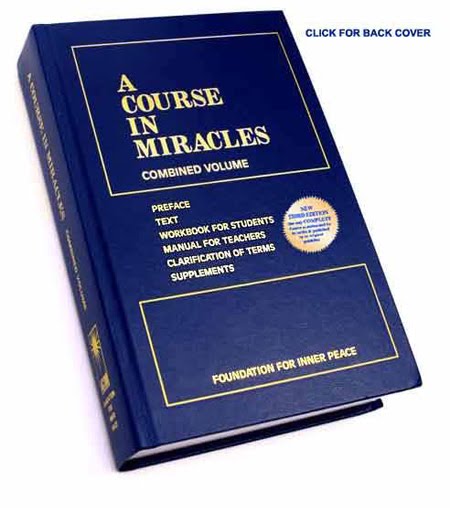Besides: even when you have solved all unconscious guilt in your own mind, you still could encounter physical or other problems. You still have a physical existence in this world of appearances, which is projected by the collective ego. So you are still subject to physical and material ’laws.’ But no longer will you be identified with them, and therefore you will continue to feel inner peace. (Margot Krikhaar, Awakening in Love, Part II, Chapter 3)And in the surrounding discussion she addresses these issues in various ways based on her own experience, moreover, her own life has since become a living demonstration of the issue. Like Ken Wapnick and many others besides she also resorts to the image of the iceberg of guilt, making the point that of necessity, in our dream lives we can only deal with the issues that surface above the waterline of the unconscious, the tip of the iceberg. So in the same passage she also writes:
As a result, forgiveness in this lifetime extends itself to all lives and into all of time—past and future. For those lives are all illusory and only a result of unconscious guilt. That guilt is in the mind, outside of time and space, and it is the mind that projects all of these lives. A change at the level of cause—in the mind—automatically results in a change in the projected film: the lifetimes in the world. While your forgiveness seems to take place at the level of the life in which you find yourself (and has positive results here as well), the real work of salvation takes place at the level of the mind, where you are in reality.Since the ego is always focused on the form, it will always demand to see results in the form, which is the essence of the story of Jesus' tree temptations in the desert. The ego really wants nothing better than to fault Jesus for not changing the form, and to ignore the change in the mind, which is the level of cause. The effects of forgiveness are far reaching, because they happen in the mind which is outside of time and space, but our awareness at that moment is all preoccupied with one infinitesimally small part, our life, and we have no insight in the process of undoing that is gradually loosening the strings of the laws of the ego, and letting us out of prison. So while it is our experiences in form which present us with forgiveness opportunities in this lifetime, the point of the forgiveness work is not to move pieces on the chessboard, or to move one particular mountain as we perceive it. The point of the forgiveness work is in the mind to undo the decision that led us to perceive that our reality is this limited world of chess pieces on a board, that we call our 'life,' and while 'mountains' may be part of that experience, they are not our reality.
The result of forgiveness then on this level may equally be that certain mountains do move and others do not, our inner experience will increasingly be peaceful through the practice of forgiveness, so it will be indifferent where those perceptual mountains are, because we realize by then that our happiness is not dependent upon them.
Margot's life since then has become a demonstration of these issues, as she was diagnosed with advanced breast cancer that had already metastasized to her organs at the time of her first diagnosis, and she has shared these experiences in a blog. Meanwhile she also finished up her second book during the time she was already dealing with that situation. Her other materials, including her blogs about the meaning of health and healing, will be published posthumously. Suffice it to say here, that she reported early on that she sensed that somehow at the level of the mind she had already come to the conclusion that this experience was simply her way of leaving this life, that her job was essentially over, and she was at peace with it. Which IS the point: the "mountain" (of guilt) moved indeed, so any 'mountains' in the perceptual world no longer bother us the way they used to, or rather, the way we used to think they did.
Copyright, © 2012 Rogier F. van Vlissingen. All rights reserved.
